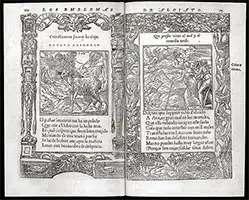 The etymology of emblem takes us to emblem , a word from the Latin language. This term, for its part, comes from the Greek émblēma .
The etymology of emblem takes us to emblem , a word from the Latin language. This term, for its part, comes from the Greek émblēma .
The concept refers to the symbol or insignia that is constituted as a representation of something else . In ancient times, an emblem was an image or figure without a clear meaning but which, in its lower part, presented a motto or an expression that allowed its moral meaning to be deciphered and understood.
This type of emblems emerged in the 16th century , when the Italian jurist Andrea Alciato created a series of epigrams with a title each. The printer thought it would be convenient to add illustrations and in this way added an image to each epigram. The book, published as "Emblems" , was presented in 1531 .
The emblems consist of a figure (painted, engraved or embroidered), a title (as a somewhat cryptic sentence) and an explanation (texts or verses that specify the meaning of the work ).
Let's see below the basic components of a classical emblem in more depth: a figure , a title and an explanatory text . The figure is perhaps the element that stands out the most, given that it does not require any prior knowledge to appreciate it, even if only superficially. It is normally engraved with techniques such as intaglio or xylography, but it can also be painted or embroidered.
Typically, the image is created with the intention of conveying a moral message, although its meaning is usually not easy to understand until it is complemented by the text. Both parts are essential for the correct understanding of the message, and it is thanks to the impact that this peculiar combination achieves that it becomes easier to memorize it.
Curiously, in literature referring to the history of art , especially in Spain, images of emblems do not usually appear; This may be due to the fact that the authors wanted each reader to construct them in their mind, or to issues related to the difficulties that engravings entailed in books of the past.
 Normally, the title is a relatively cryptic witticism or sentence , which is usually in Latin and offers the observer a clue to understand the image. Its location could be above or inside the latter, but almost never below. While some are original, most come from classic sentences.
Normally, the title is a relatively cryptic witticism or sentence , which is usually in Latin and offers the observer a clue to understand the image. Its location could be above or inside the latter, but almost never below. While some are original, most come from classic sentences.
Finally, there is the explanatory text, which relates the meaning of the two previous elements. It is usually written in verse, in Latin or in the vernacular, depending on the person for whom the emblem was intended. Its structure consists of a description of the image that is complemented by the moral message it contains. Frequently and especially in Spain, we can see a gloss after the epigram, a note written in prose that helps us understand even more the meaning of the engraving.
Currently, the idea of emblem is used to refer to one or something that functions as a symbol of something . It can be said, in this framework, that Lionel Messi is an emblem of FC Barcelona and the Argentine soccer team, since he is the main figure and the scorer of both teams. Messi is the highest representative of both the Spanish team and the South American team.
The Eiffel Tower , on the other hand, is the main emblem of Paris . This means that the monument is a very representative image of the French capital: when someone sees a photograph of the Eiffel Tower , they immediately think of Paris ; In turn, when talking about icons of the French city, the aforementioned tower soon becomes present.
